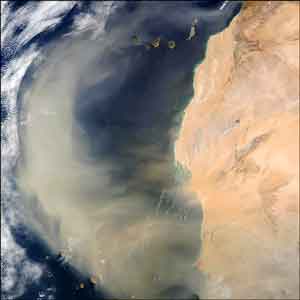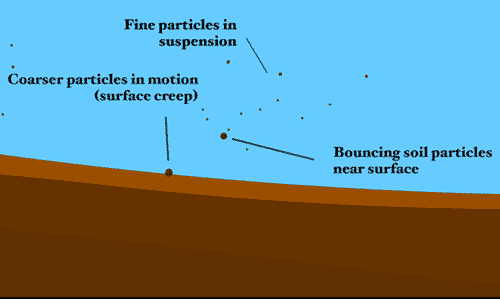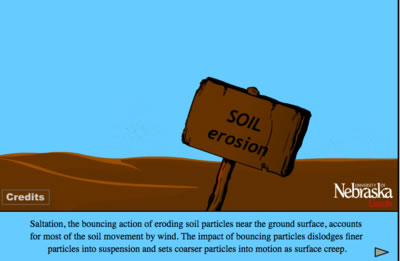- Plant & Soil Sciences eLibrary >
- ATI Soils >
- Home

 Deana Namuth-Covert
Deana Namuth-Covert

Types of Wind Erosion
|
|
|
|
|
|
|
 |
| NASA satellite image of a dust storm carrying particles off the coast of west Africa. Image by NASA |
2. SALTATION: Movement of particles by a series of short bounces along the surface of the ground, and dislodging additional particles with each impact. The bouncing particles ranging in size from 0.1 to 0.5 mm usually remain within 30 cm of the surface. Depending on conditions, this process accounts for 50 to 90% of the total movement of soil by wind.
3. SOIL CREEP: The rolling and sliding of larger soil particles along the ground surface. The movement of these particles is aided by the bouncing impacts of the saltating particles described above. Soil creep can move particles ranging from 0.5 to 1 mm in diameter, and accounts for 5 to 25% of total soil movement by wind.
 |
|
| The impact of bouncing soil particles dislodges finer particles into suspension and sets coarser particles into motion as surface creep. Image by UNL |
In the following animation, you will observe the processes of saltation, surface creep, and suspension. Note that the larger particles tend to move by saltation and surface creep while finer particles are suspended and moved in the air. Click on the picture to view the animation.
 |
|
Animation of saltation, soil creep, and suspension during wind erosion. Animation by UNL |
Comments